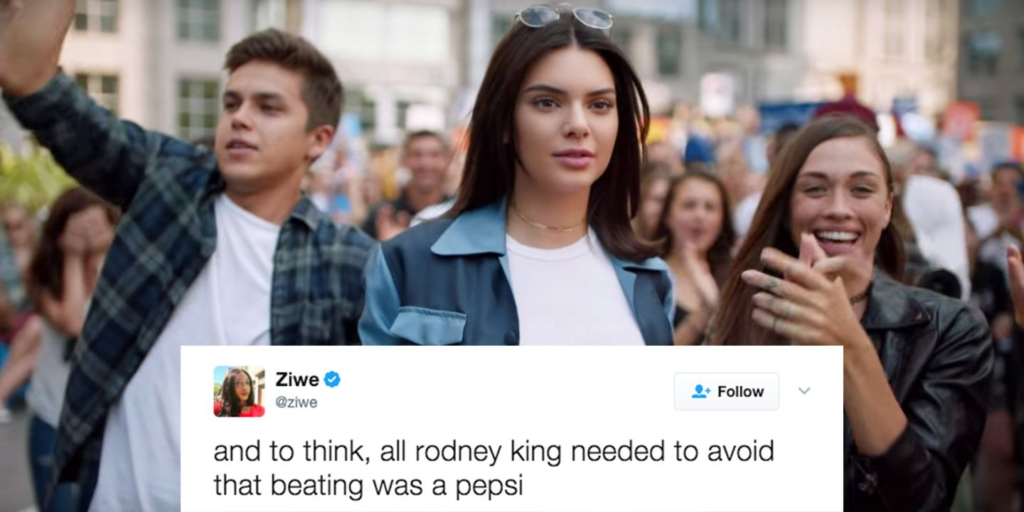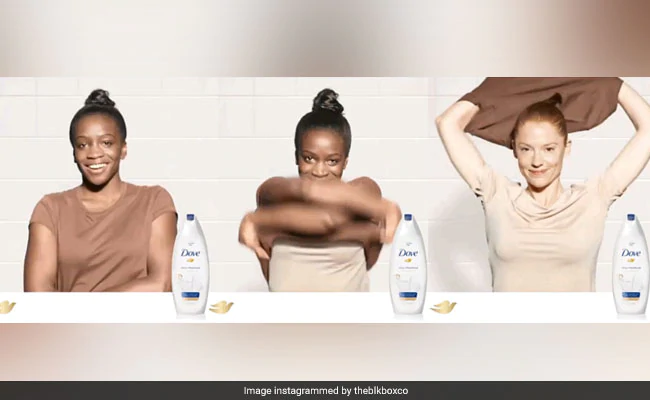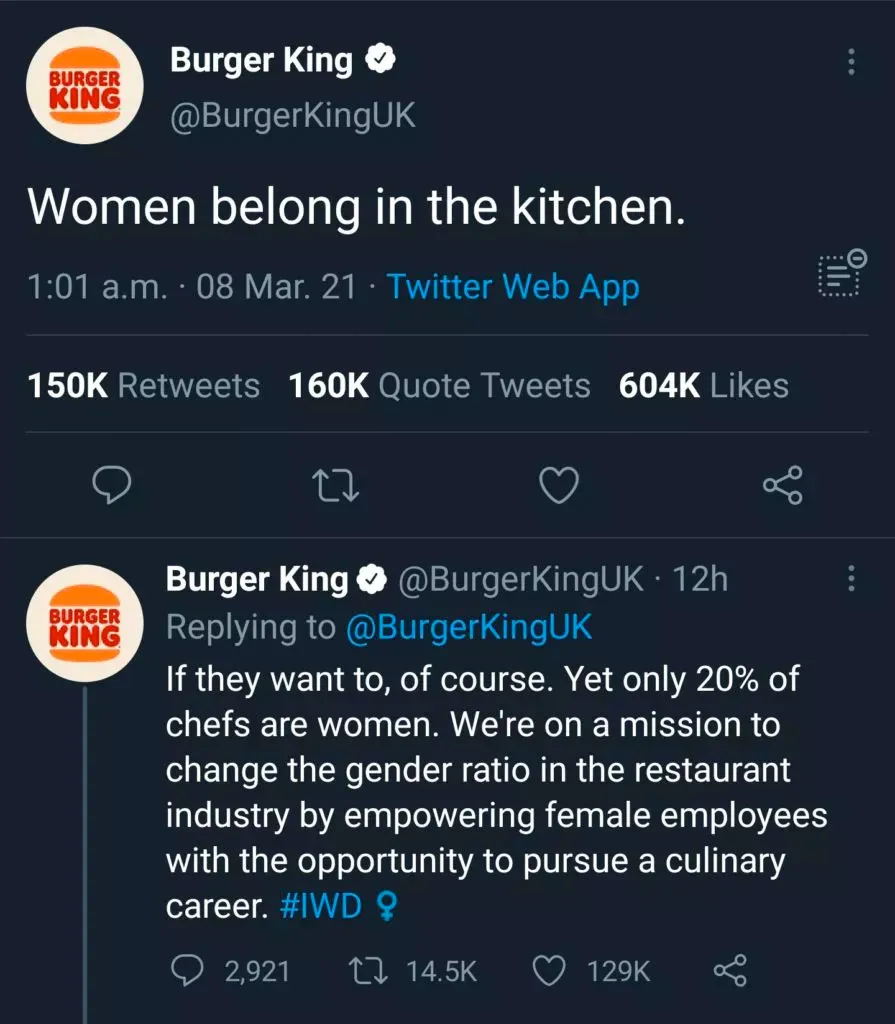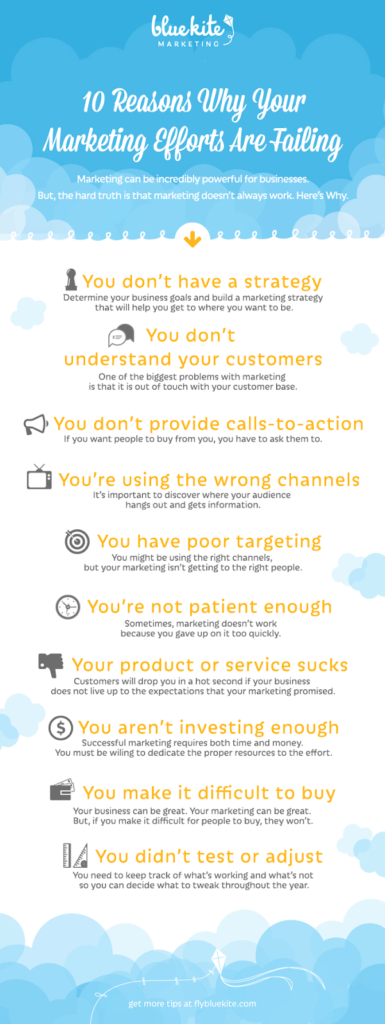10 Marketing Strategy Failures, And What to Learn From Them

A lot of resources go into marketing plans each year, by businesses big and small. Likewise, planning marketing initiatives is a time-consuming process and requires several approvals. But more than half of the initiatives often end up becoming marketing strategy failures. They either do not generate the expected outcome or they do not turn out to be as productive as the initial idea when executed. One of the biggest reasons for such failures is the lack of concrete goals on the part of the marketers. Some campaigns are initiated on the grounds of unrealistic expectations, making them major marketing strategy failures to learn from.
What Is a Marketing Strategy?

The long-term planning of a brand’s business objectives is known as its marketing strategy. By devising a marketing strategy, a brand defines how it wants to position its services in the market, and how it will be creating sales opportunities. The marketing strategy of a brand is determined by its business objectives and concrete goals. There are four distinct levels to a marketing strategy, which include product strategies, pricing strategies, distribution strategies, and promotion strategies. A sound marketing strategy includes the company’s vision, its target audiences, buyer personas, the brand’s positioning within the market, its multi-channel activity plan, and the timeline for the implementation of that plan.
What Is the Significance of a Marketing Strategy?

In order to make the most of its marketing and advertising efforts, your brand needs a sound marketing strategy. There are several benefits of having a marketing strategy. Some of them are as follows:
- It leads to increased sales.
- It helps the brand strengthen its relationship with the target market.
- It helps bolster brand identity.
- It creates a sustainable growth model for the brand.
- It keeps the activities of a brand relevant and consistent
- It allows a brand to measure ROI.

10 Examples of Marketing Strategy Failures
It is not uncommon for brands to take missteps when launching new marketing campaigns. Take the following marketing strategy failures as learning opportunities.
1. Real Beauty Bottles by Dove

Dove had been winning hearts with its #RealBeauty campaigns for quite some time. But the release of its limited-edition packaging, which was in the form of shapeless soap bottles representing women’s diverse body types, had the opposite effect on audiences. This packaging sent the wrong message to the customers and resulted in an angry social media backlash from people worldwide. Many women believed the bottles looked nothing like real bodies, and that Dove had taken the idea a little too further.
2. Kendall Jenner’s Pepsi ad
One of the worst marketing strategy failures ever was the Pepsi ad starring Kendall Jenner.

This commercial featured Kendall as a part of a protest. At the end of the commercial, she walks up to a police officer and hands him a can of Pepsi as a peace offering. As the cop takes the can, everyone can be seen cheering. While it was meant to promote global peace and unity, this ad did just the opposite of that.
It, in fact, was known to trivialize the Black Lives Matter movement, and was extremely tone-deaf in its approach, wherein a protest was reduced to a party event. In a rush to show that your brand is trendy and updated, do not launch ill-designed ads that are not really thought through.
3. Airbnb’s “floating world” email

Another one on the list of epic marketing strategy failures is Airbnb’s email which got a lot of flak due to bad timing. The email contained an image of a house on the surface of the water, and one of the subheads read, “Stay above water.” What led to the failure of this idea was that Airbnb probably didn’t keep up with the news at that point in time. It was the month of August, and Houston was engulfed by Hurricane Harvey. This situation made the email come across as extremely tone-deaf.
4. Dove’s racist Facebook ad
Once again, Dove’s plan of reinforcing positivity was ruined by an idea not executed properly. This Facebook ad features a young black woman removing her shirt, just for a white woman to emerge from underneath.

The brand ended up getting ample bad reviews and a lot of social media heat. The biggest lesson from this marketing strategy failure is that it is crucial to have a multi-perspective strategy panel and a review team to ensure your campaigns are inclusive and well-documented through and through. Dove could have benefitted from more cause-based marketing than an ill-designed ad, such as this one.
5. “White is Purity” ad by Nivea

Another one of the terrible marketing strategy failures was a Nivea ad with the tagline, “White is Purity.” The image accompanying it had a woman’s back covered by her long and dark hair. She was in a white outfit. The interpretation of the ad had audiences feeling quite enraged. It was seen as largely racist, exclusionary, and insensitive. Being sensitive to customers worldwide is extremely important when planning marketing strategies.
6. “Would You Rather” game by Snapchat
An extremely degrading move on Snapchat’s part was a game called “Would You Rather.” It turned into an absolute PR nightmare for the social app.

The game posed questions like, “Would you rather slap Rihanna or punch Chris Brown?” Since Rihanna has had a past experience with domestic violence, this move was disturbing for not just her fans, but also domestic violence victims worldwide.
7. “Lighter is Better” slogan by Heineken
Although Heineken was talking about its beer, the ad ended up getting added to the list of marketing strategy failures, owing to its slogan, “Sometimes, lighter is better.” There is nothing spectacularly wrong with the words of this ad, except for the fact that the beer bottle passes dark-skinned people before it can be seen in the hands of a fair-skinned woman.

It is, therefore, a good idea to keep your marketing team diverse so that issues like this can be spotted before they spiral out of control.
8. The KFC-Oprah giveaway
KFC launched an interesting and attractive offer for its customers, announcing that viewers of The Oprah Winfrey Show would get a coupon, promising them a free chicken meal (two pieces) with two individual sides and a biscuit. The customers simply had to download the coupon from the Oprah website.
The lack of proper research on KFC’s part led to millions of people downloading coupons (as many as 10.5 million). KFC had to give away free food worth $42 million as a result. Conducting proper research is important before offering discount offers, coupons, or giveaways. Otherwise, such campaigns can backfire and lead to more losses than profits.
9. Burger King’s Tweet on Women’s Day

On the occasion of Women’s Day 2021, Burger King published a thread of Tweets announcing their scholarship program for women interested in pursuing culinary arts. But the content of the Tweet was clearly misguided. It was intended to reduce gender discrimination by means of this scholarship, but the words, “Women belong in the kitchen” had the opposite effect. It is advisable not to use controversial issues to grab attention. There is a high chance of misinterpretation in such cases.
10. “Spiked eggnog” ad by Bloomingdale’s
The 2015 Christmas catalog by Bloomingdale’s featured a man looking at a woman laughing and it read, “Spike your best friend’s eggnog when they are not looking.”

While it was not intended to do so, the ad was seen as promoting the idea of date rape. This was an absolutely terrible idea for any ad, let alone a Christmas ad. Playful humor is a good device to use when planning ads, but controversial and sensitive topics should be avoided at all costs. Since this was a print ad, Bloomingdale’s was unable to completely pull it from the market. This marketing strategy is also a good reminder to be extra careful with print media.
Why Do Certain Marketing Strategies Fail?
Here are a few reasons why marketing strategy failures take place.

1. Quality of the product
One of the most common reasons for failed market segmentation is a poorly designed product. Without a great product, a brand cannot achieve success. A bad product can lead to a lot of negative repercussions for a brand. For instance, Samsung has launched several amazing gadgets in the past years and is a trusted name in the world of smartphones and electronic gadgets. But the Samsung Galaxy Note 7 was one of the worst failures of the brand, and they are remembered for it even now.
2. Wrongly selected market segment
The major reason for any brand’s failed market segmentation is its wish to expand into all the realms as quickly as possible. In order to establish a strong and trusted position in the market, it is important to choose your market segment carefully. After you have gained a substantial user base in a select few markets, you can consider expanding.
3. Failure to adapt to trends
Marketing strategy failures also happen due to a brand’s incompetency when it comes to adapting to the rapid changes of the market. Technology, automation, analytics, artificial intelligence, data processing, and more—everything is changing around us, and there are a lot of brands need to keep up with. It is essential for a brand to adapt as quickly as possible to the trends in the market.
4. Unfulfilled promises
Customers have expectations from your brand, and the way you deal with them is what will define your brand identity. If your brand is unable to successfully meet those expectations, customers are greatly dissatisfied. It is crucial that brands make their marketing plans agile, and are quick in responding to errors and fixing them. Making adaptable plans can save a brand from a situation of unmet promises and customer dissatisfaction.
We all have heard enough times that “to err is human.” However, marketing strategy failures are errors that can cost a brand a lifetime of reputation and trust. It is a good idea to observe strategies and campaigns of other brands and learn from them, thereby avoiding the same mistakes.
Key Takeaways
- A marketing strategy is important, as it helps in increasing sales, establishes the brand’s identity, keeps the brand relevant and consistent, helps in its organic growth, and allows the brand to measure its ROI.
- A sound marketing strategy includes the company’s vision, its target audiences and their buyer personas, the brand’s positioning within the market, its multi-channel activity plan, and the timeline for the implementation of that plan.
- A bad product is one of the primary reasons for a marketing strategy failure to occur.
- A number of brands fail as they cannot adapt quickly to the changes in the market.
- Sound research is essential before launching coupons and discount offers.
- It is advisable not to use controversial issues to grab your audience’s attention. There is a high chance of misinterpretation in such cases.
FAQs
Some bad marketing strategies to avoid at all costs include filler advertising, spamming, cold calling, not doing enough research, and not paying attention to market trends.
Some of the major marketing fails of all time are as follows:
1. Dove’s “Real Beauty Bottles” ad
2. Bloomingdale’s “spiked eggnog” ad
3. Kendall Jenner’s Pepsi ad
4. Women’s Day Tweet by Burger King
5. KFC and Oprah Winfrey’s miscalculated giveaway
In order to make the most of your marketing efforts, you must educate your audience, update your content constantly, expand your guest blogging endeavors, personalize your marketing messages, invest in original research, use more data-driven ideas, and include more video content.
The most commonly observed reason for the failure of marketing campaigns is that marketers are not aware of what they are working towards. They start devising campaigns and strategies without setting an initial concrete goal.
Latest Blogs
Learn how to rank on AI search engines like ChatGPT, Perplexity, and Gemini by optimizing your content for authority, structure, and relevance. Stay ahead in AI-driven search with this strategic guide.
Explore the best healthcare SEO services for your medical practice. Improve online visibility and effectively reach more patients in need of your services.
Discover top social media agencies specializing in banking solutions, enhancing financial services and driving engagement.
Get your hands on the latest news!
Similar Posts

Content Marketing
5 mins read
Top 10 Financial Marketing Agencies to Help Your Business Succeed

Content Creation
5 mins read
AI for Marketers Unlocking Smarter Strategies for Content Creation

Content Marketing Strategy
6 mins read